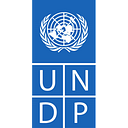Two years after the earthquake: #EU4Schools has restored hope
by Nora KUSHTI
Two years ago, the morning of 26th November found Albania in agony after a 6,4-magnitude earthquake struck killing 51. More than a thousand aftershocks, further damaged homes, education institutions, public and private buildings. The earthquake left cities paralyzed and communities hopeless. It took a heavy toll on education facilities leaving thousands of children traumatized and uncertain about their future education.
But there came a ray of hope. On February 17, 2020, the European Union organized “Together for Albania” International Donors’ Conference in Brussels aiming to support the reconstruction efforts after the devastating earthquake. The European Union, the United Nations, the World Bank, and the Government of Albania carried out a Post-Disaster Needs Assessment which served as a guiding tool for the Conference and as a basis for the reconstruction and rehabilitation efforts. The European Commission pledged €115 million from the EU budget to rapidly reconstruct and rehabilitate key public buildings.
Soon after #EU4Schools, worth €75 million came to life, bringing hopes for a better future to pupils, teachers, and children in the 11 most affected municipalities- a noble act of support benefiting the country’s youngest generation. The Programme implemented by UNDP, which has also invested €765,000 is reconstructing or repairing 63 educational institutions in total.
Two years after the earthquake, children and teachers give a firsthand account of their experiences.
“The earthquake jolted our school. The building withstood the strong tremor but was left with large cracks in its walls. It was heartbreaking to see it like that. That scene of wreckage will stay with me for long”- says Dea, a 15-year-old studying at “Demokracia” 9-Year school in Mamurras, Kurbin Municipality, one of the most affected by the earthquake.
“We had to attend classes in a neighboring school operating on double shifts. That environment was “foreign” to us. Learning was hard. One day we learned that our school would be thoroughly repaired. After a Facebook announcement inviting us to be present at a meeting, pupils, parents, teachers came together to discuss about the school design which would best fit our needs”.
The new academic year found Dea and 115 other pupils in a renovated school with well-lit classrooms, a gym, a sports court, a chemistry lab, a library, new desks and blackboards.
“I could not have imagined it any better. I love my new school. It has made learning more interesting. I want to be a physicist in the future. The physics lab is a dream come true. The whole school is. I feel lucky!”- says Dea.
In Qerekë, the director of “Korb Muca” 9-Year school Sazan Shira recalls: “ The previous school was in the old barracks of a former military unit and did not meet the necessary conditions for teaching and learning. Rain often flooded it and students could only cross the school entrance by walking over an improvised gravel path, put together by parents”- he said.
“The school welcomed its 130 pupils this new academic year. The number of students has increased compared to the previous years. It is so inspiring to see classes being conducted in an enabling environment for children to learn and grow. We are putting emphasis on performance and I am happy to say it has improved. The school is built with European standards and has modern labs offering pupils hands-on experiences and significantly advancing learning, gyms, and sports facilities — all fully accessible for children with disabilities”, he says.
“We saw and discussed the design of the kindergarten presented to us on paper. We are happy to see that plan materialized into a beautiful kindergarten. This is a great start for my daughter’s early education”- says Anila a parent of a 3-year-old attending “Evropa” kindergarten in Qerekë.
As of today, 19 schools have been completed. Around 6000 children are studying in new and modern facilities just like their peers in any European Union country.
UNDP has combined two key principles during the reconstruction process: #BuildBackBetter and #BuildBackTogether. #BuildBackBetter implies stronger structures which can resist earthquakes and natural disasters bearing the highest international standards of quality and safety. All 63 education facilities benefitting 24000 pupils and teachers, will have renewable energy sources, will be fully accessible for pupils and children with disabilities and will have dedicated spaces for medical care and psychological support.
#BuildBackTogether has offered a unique opportunity to engage the beneficiaries in the reconstruction of their own education institutions and “tailor” the design as per their needs. 58 consultation meetings and 16 “place checks” organized so far have brought together around 1900 pupils, children, parents, representatives of the local government, and local institutions-thus also promoting ownership and sustainability of the investment.
Dea and her friends look to the future with confidence. They know that education is treasured as their key to open the door to a better life. EU4Schools has opened that door.
